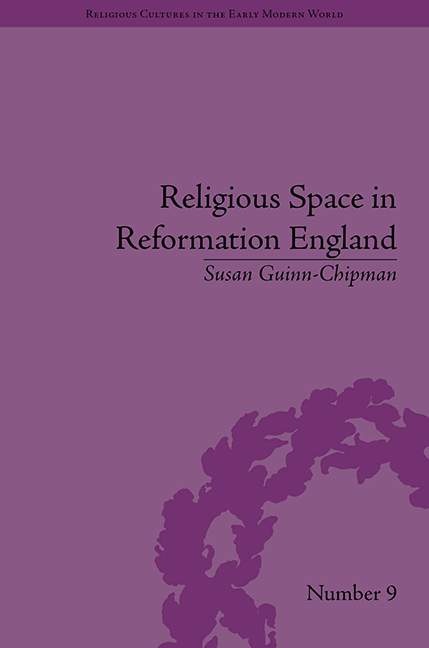Book contents
- Frontmatter
- CONTENTS
- Acknowledgements
- List of Figures
- Introduction
- 1 Dissolution and Adaptation: Religious Space in Henrician England
- 2 Radicalization and Response: Religious Space in Late Henrician and Edwardian England
- 3 Reframing the Parish Church in Marian and Elizabethan England: Cultural Adaptation in the Later Sixteenth Century
- 4 Contesting Religious Space: Alteration and Reaction in Stuart England
- Epilogue: The Persistence of Memory in Early Modern England: Mapping the Past
- Notes
- Works Cited
- Index
Introduction
- Frontmatter
- CONTENTS
- Acknowledgements
- List of Figures
- Introduction
- 1 Dissolution and Adaptation: Religious Space in Henrician England
- 2 Radicalization and Response: Religious Space in Late Henrician and Edwardian England
- 3 Reframing the Parish Church in Marian and Elizabethan England: Cultural Adaptation in the Later Sixteenth Century
- 4 Contesting Religious Space: Alteration and Reaction in Stuart England
- Epilogue: The Persistence of Memory in Early Modern England: Mapping the Past
- Notes
- Works Cited
- Index
Summary
Writing c. 1671, archaeologist and antiquarian John Aubrey sketched the north door of the parish church of Kington St Michael, Wiltshire, ‘of which fashion is also the south dore of the Chapelle of Priory St Marie in this parish, a Nunnery founded by Mawde yeEmpresse’ (see Figure I.1 on p. 2). Though Aubrey's study of the two churches and his comparison of each to Salisbury, Iffley and elsewhere in south-western England was characteristic of his deep interest in establishing a typological sequence of medieval English architecture, his was not merely an intellectual pursuit. The small priory estate of St Mary's, Kington, where Cecelia Bodenham had served as prioress before her promotion to Wilton in advance of the dissolution of the monasteries, had been granted to Robert Long of Dray-coat by Henry VIII in 1537. By 1556, the house and lands had been sold to John Taylor and, by 1570, the property had become the residence of Isaac Taylor, father of Eleanor, great-grandmother of John Aubrey. Though the former priory had been sold in 1628 when Aubrey was just two years old, he clearly retained an interest in the site, the memories of the ‘ceremonies of the Priory, &c.’, nurtured by his grandfather. Aubrey described much of St Mary's as still standing, with the exception of the chancel and its chapel of St James: ‘In the Chapell, which was very fayre, is neither glasse, chancell nor monument remaining’.
- Type
- Chapter
- Information
- Religious Space in Reformation EnglandContesting the Past, pp. 1 - 8Publisher: Pickering & ChattoFirst published in: 2014



